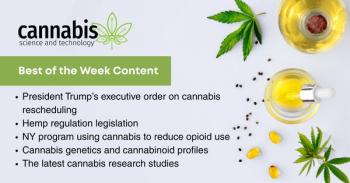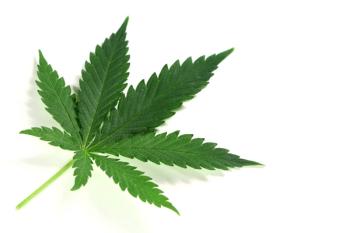
A Closer Look at cGMP Methods for Cannabinoid Molecules

George Anastassov, the CEO of AXIM Biotech, recently spoke to us about the current good manufacturing methods (cGMPs) his company has developed, their significance to the market, and plans for the future.
With the recent approval by the U.S. Food and Drug Administration of the first drug containing cannabidiol (CBD), it is clear that the pharmaceutical industry is poised to join the cannabis rush. However, one big hurdle that pharmaceutical companies must address is the current good manufacturing methods (cGMPs) used to extract and microencapsulate cannabinoid molecules. George Anastassov, the CEO of AXIM Biotech, has been doing research in this area and recently spoke to us about the cGMPs his company has achieved, their significance to the market, and plans for the future.
Your company, AXIM Biotech, has developed proprietary current good manufacturing practices (cGMP) methods to extract and microencapsulate cannabinoid molecules for a variety of pharmaceutical delivery formats from cGMP-produced medicinal cannabis. What led to the development of these cGMP methods?
No pharmaceutical product can be registered by the regulatory agencies (such as the U.S. Food and Drug Administration [FDA] and the European Medicines Agency [EMA]) without verifiable provision of the cGMP processes from start to finish, that is, from cGMP plant material to final active pharmaceutical ingredient (API) to product.
Can you tell us more about the process involved in developing these cGMP methods?
All I can share is that there are fewer (magnitude of x10) steps involved than in procurement of synthetic cannabinoids. Therefore, there are significant cost savings during the manufacturing process.
Can you briefly describe the extraction and microencapsulation processes?
There are two different processes covered by different intellectual properties (IPs) belonging to AXIM.
- The extractions is: The present invention relates to a process to extract D9-tetrahydrocannabinol carboxylic acid (D9-THC-A) from the plant Cannabis sativa L., to decarboxylate D9-tetrahydrocannabinol carboxylic acid to obtain D9-THC, and a process to purify D9-THC without the use of a reverse phase column.
- The microencapsulation in sugar alcohol is: This invention relates to a complex of at least one cannabinoid and a sugar alcohol, wherein the ratio of cannabinoid–sugar alcohol is between 1:20 to 1:5. The complex is produced by dissolution of cannabinoid and sugar alcohol in a solvent; and the solvent is evaporated under reduced pressure. The complex is in solid form and may be incorporated into food, pharmaceutical, and cosmetic products.
What are the advantages over the processes you developed compared with other extraction methods?
The advantages include:
- Extreme purity comparable to synthetic cannabinoids.
- Reduced cost of production.
- Organically procured.
- No toxic chemicals utilized during the process, hence benefits to the consumer.
What impact do you think your cGMP methods will have in the cannabis market?
Tremendous; currently the only naturally extracted cGMP product on the market.
Does the recent approval of Epidiolex by the FDA have any impact on your future work with cannabinoid cGMPs?
Of course. The demand for cGMP API’s based on cannabinoids will grow exponentially.
What are the next steps in your research/work with cannabinoid cGMP methods?
Develop other cannabinoid molecules and delivery platforms.
Newsletter
Unlock the latest breakthroughs in cannabis science—subscribe now to get expert insights, research, and industry updates delivered to your inbox.




